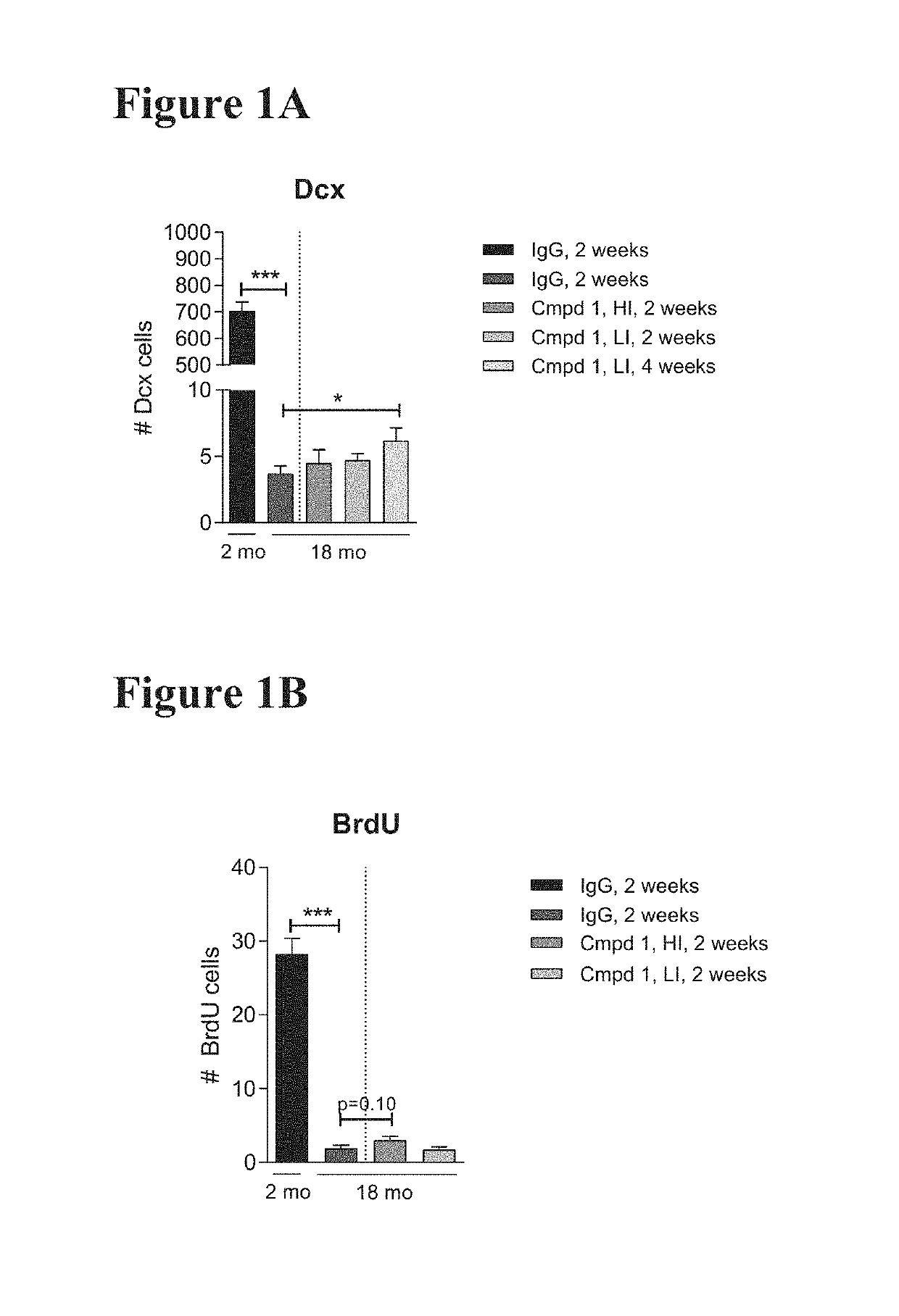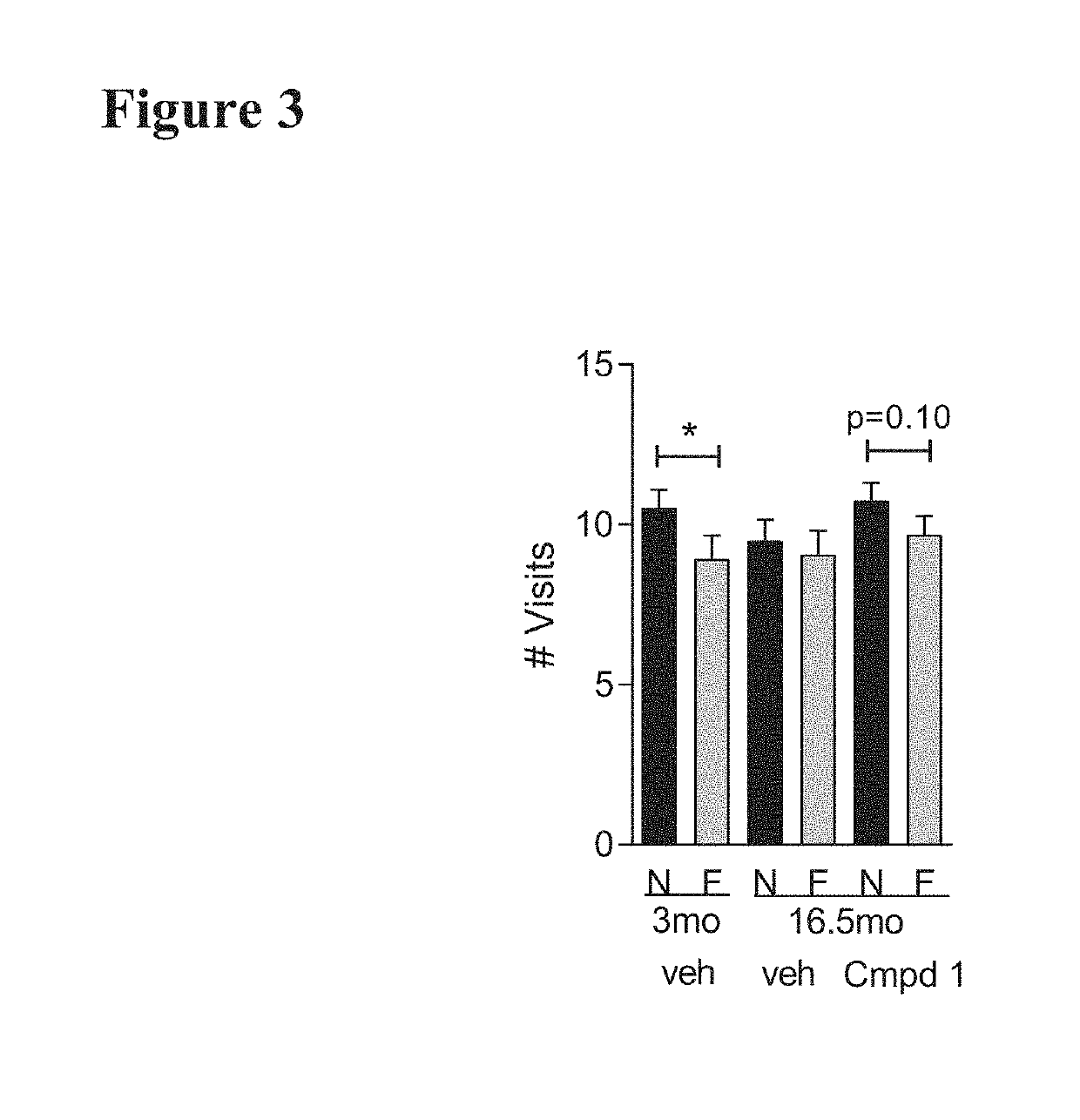Methods and Compositions for Treating Aging-Associated Impairments Using CCR3-Inhibitors
a technology of aging-associated impairment and inhibitors, applied in drug compositions, inorganic non-active ingredients, dispersed delivery, etc., can solve the problems of cognitive and motor decline associated with neurodegeneration, severe impact on quality of life, and limited success in preventing and reversing impairment, so as to improve cognition or motor activity.
- Summary
- Abstract
- Description
- Claims
- Application Information
AI Technical Summary
Benefits of technology
Problems solved by technology
Method used
Image
Examples
Embodiment Construction
[0064]Aspects of the invention include methods of treating aging-associated impairments / neurodegenerative diseases. The aging-associated impairment may manifest in a number of different ways, e.g., as aging-associated cognitive impairment and / or physiological impairment, e.g., in the form of damage to central or peripheral organs of the body, such as but not limited to: cell injury, tissue damage, organ dysfunction, aging-associated lifespan shortening and carcinogenesis, where specific organs and tissues of interest include, but are not limited to skin, neuron, muscle, pancreas, brain, kidney, lung, stomach, intestine, spleen, heart, adipose tissue, testes, ovary, uterus, liver and bone; in the form of decreased neurogenesis, etc.
[0065]In some embodiments, the aging-associated impairment is an aging-associated impairment in cognitive ability in an individual, i.e., an aging-associated cognitive impairment. By cognitive ability, or “cognition”, it is meant the mental processes that ...
PUM
| Property | Measurement | Unit |
|---|---|---|
| particle size | aaaaa | aaaaa |
| particle size | aaaaa | aaaaa |
| particle size | aaaaa | aaaaa |
Abstract
Description
Claims
Application Information
 Login to View More
Login to View More - R&D
- Intellectual Property
- Life Sciences
- Materials
- Tech Scout
- Unparalleled Data Quality
- Higher Quality Content
- 60% Fewer Hallucinations
Browse by: Latest US Patents, China's latest patents, Technical Efficacy Thesaurus, Application Domain, Technology Topic, Popular Technical Reports.
© 2025 PatSnap. All rights reserved.Legal|Privacy policy|Modern Slavery Act Transparency Statement|Sitemap|About US| Contact US: help@patsnap.com



